#hainan
Text
Alright, happy Monday! As previously promised during my review of A Tale of Thousand Stars: in preparation for the eventual release of Moonlight Chicken, I would love to share in a long manifesto my love, my passion, the GOSPEL, for what I think may be the unsung hero and character of that show, without even seeing an episode -- the actual dish of Hainanese chicken rice itself, which is known as khao man gai in Thailand.
(LONG POST! TL;DR: this post is going to contain a quick explanation of why it is SO BOMB that there’s a THAI BL that focuses ON THIS DISH, a description of the dish itself, a diasporic history of Hainanese chicken rice, links to a few recipes, and a list of places where I’ve had Hainanese chicken rice in the States.)
Borrowing a photo from Mark Wiens! Let’s get started.
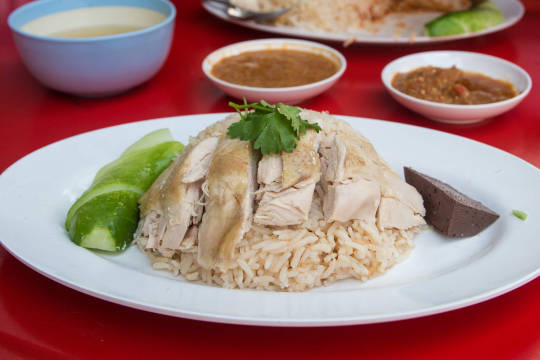
Girl, why exactly are you going off on all this?
Why, oh why, you may ask -- why should Mama Turtles wax POETIC about the seemingly simple dish of chicken rice? The simple name of the dish belies a deeply cultural symbol of so much -- of the roles that particular dishes play in Southeast Asian cultures, of how such a dish can be so difficult to make AND to relate to, and at least most importantly to me, how immigration and diasporas created the complicated and diverse foodways and cultural fabrics that we see in this part of the world.
(For the record, I’m part Malaysian, and have spent significant time of my adult life in Malaysia and Singapore. While these areas are not Thailand specifically, there’s tons of shared food preparation, culture, and appreciation from Thailand, down south to Penang and the Malay Peninsula, and down to Singapore.)
Why is khao man gai such a big deal vis à vis Moonlight Chicken?
Before I talk about the details of the dish itself, I want to set the context of why is it SO MOTHERBLEEPING LOVELY that there’s a Thai BL (with our DARLING Earth and Mix starring in it, with the DARLING First and Khao in supporting roles) that is ostensibly centered on a man making khao man gai. This is deeply heart-warming, soul-settling, feel-good shiz to me, and I think that a lot of Thai BL fujoshis who are obsessed with food, like me, would feel the same way.
Hainanese chicken rice/khao man gai is made of the most humble of ingredients -- chicken, rice, water, salt.
The fact that there would be a queer series centered around a queer man making khao man gai and selling it to others -- it means that a dish that is totally, utterly accessible to EVERY SINGLE PERSON in a country is being centered in a show focused on queer relationships....the kinds of relationships that should also be accessible to EVERY SINGLE PERSON who wants this kind of a relationship in an Asian country.
This will make even more sense as I continue writing about the dish, but suffice to say, while it’s complicated to make, Hainanese chicken rice is about the most egalitarian food there is -- and the freedom to love whoever you want should also be as egalitarian as that.
What is Hainanese chicken rice/khao man gai, and what is the big bleeping deal about it?
Before I jump to Wikipedia, maybe I should have Earth himself explain the dish.
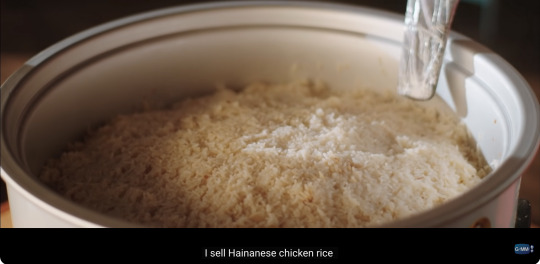


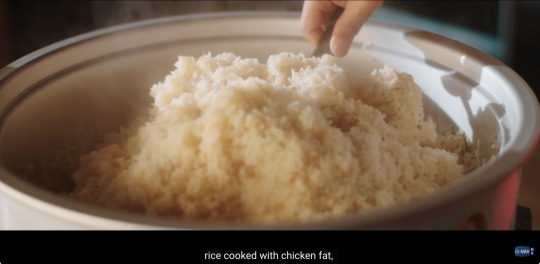
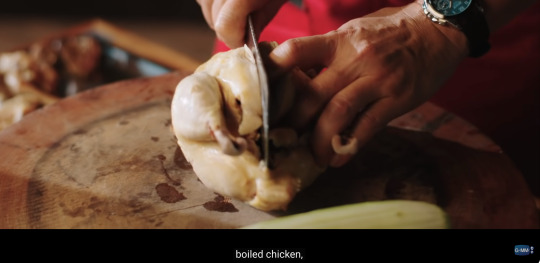
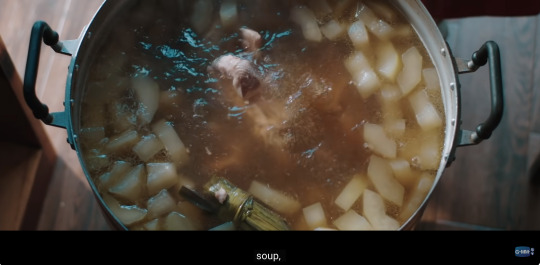


That last screenshot is truth.
Obviously, the easiest place to find a background on this dish is Wikipedia, and what I actually didn’t know before starting to type this up is that khao man gai literally means “chicken oily rice,” which totally sums up this dish. While it seems simple, it’s a very rich and filling dish, but also healthy-ish, because you’re still eating chicken, which is not the richest or fattiest of meats.
The dish consists of rice that’s first been sautéed with aromatics like ginger and garlic, and (in many, but not all cases) also sautéed with rendered chicken fat. (If you’re from the East Coast of the States or are part of a Jewish community, you’ll know this ingredient as schmaltz.)
That fatty sautéed rice is then steamed in chicken broth, ideally in chicken broth that you yourself made while you were boiling the chicken that you’ll use in your khao man gai. As far as that chicken goes, you’ve cleaned it, prepped it, maybe you rubbed salt on it to get rid of any impurities on the skin, and boiled it until it’s cooked, but not overcooked. If you’re in Thailand, you might just let it cool; if you’re in Malaysia or Singapore, or elsewhere in Asia, you might give that baby a dip in ice water after it’s done cooking, to tighten up the skin and give the skin a jellied texture that is beloved by many. You also might rub some sesame oil on your chicken after the boiling process, which is done in some, but not all, places.
You also might go wild and serve your rice not just with the boiled chicken, but also with roasted chicken, or fried chicken, or a combo of boiled/roasted/fried chicken. You ALSO might WILD OUT MORE and ALSO serve your chicken rice with, say, crispy siu yuk, which I’ve had, and like.... ooooommmmfffffgggg. It sends shivers down my spine, it’s so good.
You’ve also made the broth perfectly with aromatics, and possibly simmered either daikon or winter melon in the broth to serve alongside the composed dish of chicken and rice.
AND, you definitely best have made some side sauces. Garlic-ginger-vinegar sauce, maybe, or ginger-scallion oil, or red chili sauce, or all of them. In Thailand, a sauce that features taucu, or fermented yellow soybeans, seems to be an absolute must -- and it is goddamn pure heaven to put on your khao man gai. If you’re in Malaysia, a small dish of vinegared chili, known as chili padi, is a must must. Depending on where you’re eating this in Asia, you’ll put a bottle of dark soy sauce on the table for drizzling over all your rice, but -- you might not always see that at every place where you’re eating chicken rice.
In OTHER WORDS: this dish is a bit of a beast to make. The simple LOOK of the dish -- white chicken on top of white rice, with some sliced cucumbers to the side, and a bowl of broth next to it -- is totally disingenuous to the work you need to put in to make it taste great. Your broth, for instance, might be made by boiling chicken after chicken after chicken in it. That broth gets more concentrated and powerful over time as you’re putting in more and more aromatics in it. Your store is defined by your broth; by how perfectly each grain of rice is individually coated in a sheen of chicken fat, salt, and other seasonings; by your one-of-a-kind sauces that hit and accompany the chicken and the rice perfectly, and most importantly, by how all these components come together. If your soup, chicken, rice, and sauces are ALL PERFECTLY MADE, then you’ve hit paydirt, my friends.
It’s VERY RARE to find a shop that does all these components perfectly, or at least at the same level of tastiness.
Alright, so I get that this dish can be a motherfucker to make. But why is it such a big deal, culturally? Why would a Thai BL be focused on a guy making this dish?
So for this part, I first want to say that I think it’s very important for a Western audience to understand that this dish is deeply loved in MANY countries in Asia and Southeast Asia. I’ve eaten this dish with groups of Westerners in SE Asia -- actually exclusively white folks, now that I think about it -- and to a tee, I’ve heard complaints by them that this dish is boring and they can’t see what the big deal is about it.
I mean, American pork chops can be fine, or they can be boring, too.
The fact that chicken rice spans multiple countries and foodways should tell a Western audience that there are qualities about it, as I listed above, that are far beyond the sum of its parts. For instance -- the way to get each GRAIN of rice coated in fat and flavor takes years of experience. Y’all, I still can’t get perfect rice in my rice cooker, and I’ve been making rice for my family for more than 10 years. These things take time to perfect, and not everything one eats in Asia is going to be bombastic, like, say, Taiwanese stinky tofu or a gorgeous omakase at a high-end sushi bar.
Part of the reason why this dish is so beloved is because it IS very ubiquitous from the China-to-Southeast-Asia diaspora. I can mostly speak for Malaysia (I apologize for not knowing more about immigration patterns in Thailand), but MUCH of the fabric of Malaysian cuisine comes from specifically regional immigrant diasporas, namely from the area of China that is now known as Fujian, but that’s not a hard and fast historical rule. Well-known populations from this area in China that settled in Malaysia include the Hakka and Hokkien populations (you may have seen Hakka mee or Hokkien mee on Malaysian restaurant menus), and they also include the Hainanese population, which brought a style of boiling chicken in broth to the areas where the population settled -- which include Thailand and Malaysia, and eventually Singapore, as Hainanese descendants moved farther south down the Malay peninsula.
(By the way, if you’re ever curious, you need to read up on populations that were literally created after the first waves of Chinese immigration to Southeast Asia. The well-known Peranakan population in Malaysia, for instance, was literally created through interracial marriage of Chinese immigrants to native Malay populations, and a deeply important culture, including foodways, were born out of those marriages and population growth. It’s fascinating history in a world that often seems so hyperfocused on far right movements wanting “racial purity.” What cultural beauty comes out of populations and diasporas meeting each other and creating new cultures together.)
Back to the discussion: as Malaysian cultures and populations developed over time due in part to the influence of Chinese immigration through Southeast Asia, so, we assume, the same was happening in Thailand. (We can see deeply the effect of the influence of Chinese culture in a show like Big Dragon, which was centered around the telling of Chinese Buddhist myths through a Thai lens.) And as these immigrant populations from China traversed the Thai-Malay peninsula, their food habits stuck and were adopted by the native Southeast Asian populations. It’s no wonder that chicken rice became as beloved and ubiquitous as it did -- in part because rice is a staple food across the whole region, in part because it’s such a comforting dish (like congee, like juk, like okayu porridge), and in part because the individual ingredients themselves are humble and easy to find for your everyday home cook.
I want to just quickly touch upon the point of rice as a staple food. It seems so super obvious to us Asians, but especially for fans of QL that may not be Asian and/or may not have rice as a central and everyday food -- to make a dish like chicken rice perfectly, to have it center on the particular way in which you PREP and COOK the rice, for the rice to be all oily and salty and chicken-y -- the dichotomy of how humble rice is with how GLORIOUSLY TASTY and filling the final result of chicken rice is, can really move you. There are thousands of other rice preparations out there that are just as beloved as chicken rice -- from the Malaysian nasi lemak (literally “fat rice,” or rice cooked in coconut milk and served with delicious accompaniments) to Indian biriyani, to Japanese takikomi gohan or tamago kake gohan, to Korean bibimbap or gyeran bap -- you get the point. Dishes that center on rice are just beloved. They just are, because rice is so fundamentally egalitarian and important to our everyday way of being and eating.
AND, the way in which you EAT chicken rice -- by mixing up the accompaniments throughout the eating process, dolling up each bite of rice with a different sauce, having a sip of soup, taking a bit of meat -- that whole process of making each bite taste different allows you to have a whirlwind experience of eating with, again, very humble ingredients that end up being far more than the sum of their rice-meat-and-veg parts.
And so. When Chinese populations were immigrating throughout Southeast Asia, they brought with them, and adapted over time, a style of making rice with chicken and fat that, again, seemed so simple, but was so full of a kind of quiet and comforting flavor, that it HAD to be adapted by every country and population in which the Chinese immigrants had settled. The love for rice in the whole region was going to lead to a guaranteed adaptation of this dish for generations to cook and enjoy.
Finally, regarding Moonlight Chicken once more -- without having seen an episode yet, I want to offer some conjecture that I think (or hope) that the plot reflects the simple-but-complicated nature of the dish of khao man gai with whatever happens in the love triangles of Earth, Mix, First, and Khao. There might very well be love parallels that what seems to be simple is actually a beast to make, both in food and in relationships.
And regarding a cultural love for rice dishes, and the fact that this dish and a khao man gai establishment is at the heart of this show: it fills me up with so much comforting happiness that a khao man gai joint is what’s being used to center a theme of where people go to kick off the show. If you know of a great khao man gai joint -- you go to it, people flock to it. The trailer shows drunk people stumbling around. If you’re drunk and hungry, you want to go to a place that gives you comfort, right? That might be a McDonald’s, a taco truck, a diner, a 24-hour Korean restaurant (ugh, anju at 2 am while you’re nursing your eventual hangover...memories).
Khao man gai IS COMFORT, and IS comfort food. Earth’s character providing that comfort...I’m just saying, there HAS to be parallels between khao man gai and the storyline of Moonlight Chicken. THERE MUST BE. Let a girl dream!
Damn, girl. You went OFF. Take some Altoids. Give us some recipes!
Yes, this is definitely a manifesto of manifestos of an amazing dish.
These recipes mark the cultural landscape of this dish. I’ll note where the recipe comes from. I encourage you to review these recipes and check out the small-and-large differences in how this dish is made, depending on where in Asia the recipe is centered. (For instance, many of these recipes call for that ice bath that I mentioned earlier; that’s not ubiquitous in Thailand.)
Also, I want to note that as far as the side soup goes, I’ve only seen that Thai preparations of khao man gai GUARANTEE the soup on the side. I’ve seen some places in Singapore offer the side soup, but not all. The addition of daikon or winter melon to the soup, in Thai preparations, gives me the shivers, it is so good. So if/when you’re making this at home, keep in mind that you can choose to serve the broth/soup on the side.
Two last notes -- this coming from me, a mom and busy home cook. I sometimes do a very bastardized version of this dish for my kids, where I poach chicken in aromatics, but I don’t sauté the rice beforehand -- I just chuck the rice in my rice cooker with my poaching liquid. When I do this, I always freeze a half-quart to a quart of broth. Then, when I make the dish again, I take out that frozen broth, add it to my pot with my new chicken and water, and start poaching again. Having that base of previous broth really DOES help make my future chicken and soups taste that much richer.
AND -- while I have daikon available in my supermarket (thank you, big cities!), I often use turnips as the veg that I serve with the broth. I LOVE turnips in soup, y’all! Turnips in chicken soup are oniony without being overwhelming, and I love how translucent and creamy they get. They totally hold the flavor of broth beautifully. Next time you’re making soup, don’t leave the turnips behind, they’re great! (Oh, and also, a tip I learned from the Kinou Nani Tabeta mangas -- I also use leeks as an aromatic in my soup, along with garlic and ginger. Leeks are AMAZING in soup! They can help take away any gaminess you might get from poaching chicken or other meat.)
Okay, recipes!
The Woks of Life (China)
Food 52 (Thailand)
Mark Wiens (Thailand)
Rasa Malaysia (Malaysia)
Adam Liaw (Singapore-ish recipe, note the use of sesame oil for rubbing on the chicken after the ice bath -- not all recipes call for this)
Kwokspots (maybe we can call this a ubiquitously Asian recipe? I actually just love this dude on IG, I’m gonna hype up his recipe)
Um, this is a lot. Where can I order this dish?
In my post about A Tale of Thousand Stars, I referenced Eim Khao Man Gai in Elmhurst, Queens, NY (see footnote below). I unfortunately only know places to eat Hainanese chicken rice/khao man gai in either NY or SoCal, but I ENCOURAGE you to please seek it out wherever you live.
Over the years, even while I’ve lived thousands of miles away from New York, Eim Khao Man Gai is my restaurant par excellence for khao man gai. It’s all they serve, and they do it SO well. Eim Khao Man Gai also does their chicken three ways -- steamed, roasted, and/or crispy. You guys, it’s just heavenly, and their side sauces are to die for.
In SoCal, Savoy Kitchen was the first place I heard of that specialized in chicken rice, and it’s incredible here. As well, I love Side Chick at the Westfield Santa Anita mall in Arcadia. I’ve eaten a bunch at Ipoh Kopitiam in Alhambra, but I haven’t tried their Singapore-style Hainan chicken rice yet -- it looks amazing, and many reviews say that it’s currently best version in the San Gabriel Valley.
Back to New York for a second -- if you’re looking for a place more local to you that isn’t in Queens, just look at Yelp. If I lived in NYC now, I would be in tears with how much more available this dish has gotten over the years.
Wherever you are in the States -- the Bay Area, Texas, anywhere where there are significant Asian populations -- or wherever you are in the world, please seek out Hainanese chicken rice/khao man gai. Again, it may not LOOK exciting on the menu. But you’ll get a taste for the kind of comfort food that really hits home for so many of us Asians.
Holy shit. You must be exhausted!
WOW WOW WOW, y’all. If you’ve gotten THIS FAR -- bless you! Thanks for going on this road with me. Please make, buy, and/or eat Hainanese chicken rice/khao man gai. Appreciate the differences of the dish from each of the cultures that you’re eating it from. Please give big hugs to GMMTV for focusing a BL on this most humble, beautiful, delicious, soul-satisfying dish. I’m hoping for all the food/love parallels. I’m dying to see Mix just snarf on a big plate of khao man gai to kick the series off.
Moonlight Chicken is gonna be SO GREAT! And chicken rice is just the best dish ever. Please enjoy it!
* * *
If you have the energy to read a little further, one more urge from your devoted food mom here. @secretsfromwholecloth noted in a comment on my ATOTS review that ae and aer friend had actually hit up Eim Khao Man Gai, which was SO RAD to read. If you have never visited NYC before, and you’re plotting your itinerary of the usual tourist stops -- I beg you to please save at least an afternoon to hop on the 7 train and head out to Queens. Queens has some of THE BEST RESTAURANTS in NYC. From Indian and Tibetan in Jackson Heights, to Thai and Filipino food in Elmhurst and Woodside, to Greek in Astoria, to Korean in Bayside and Flushing, and the monolith that is Flushing’s Chinatown -- Queens is the happiest and fucking coolest diverse place in the world. Don’t be afraid to leave Manhattan for an afternoon or even a whole day. Eat everything during the day, hit up Flushing Meadows Corona Park for some exercise, check out the Queens Museum and the awesome Noguchi Museum, unwind at a cocktail bar in Long Island City or Sunnyside at night. Queens is totally the unsung best borough in NYC, one of the most diverse counties in the States, and I’ll stand up for Queens County every minute of my life over Manhattan.
#moonlight chicken#a tale of thousand stars#earth pirapat#mix sahaphap#earthmix#khao man gai#hainanese chicken rice#cooking#thai cooking#malaysian cooking#singaporean cooking#hainan#foodways and diasporas#chinese diaspora
178 notes
·
View notes
Text

Ph. Azeros Heroc 海螺殻 (林宸 Lin Chen). "2021 Hainan: weightlessness" (CN)
16 notes
·
View notes
Text

Japanese soldiers make their way through a burning village during their attack on Hainan Island - China, March 1940
#world war two#1940s#worldwar2photos#history#ww2#wwii#ww2 history#wwii era#world war 2#ww2history#ww2colourphotos#hainan#china#pacific#war in the pacific#1940#japanese army#pacific ocean
39 notes
·
View notes
Text
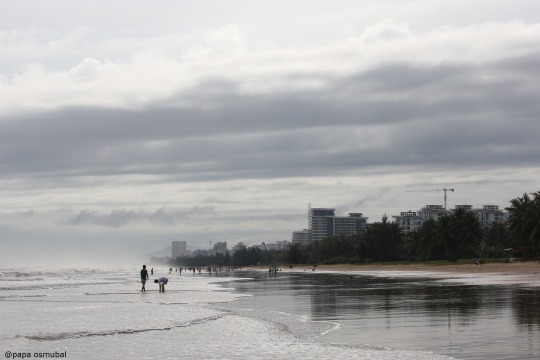
Haianan Island beach, China
3 notes
·
View notes
Photo
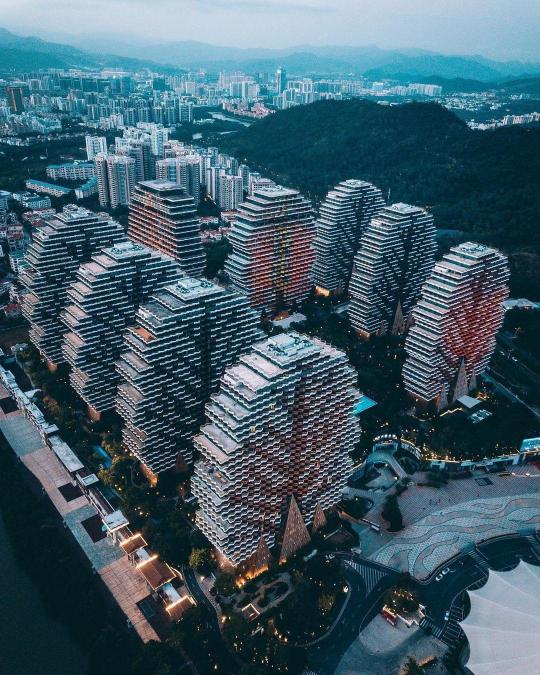
3 notes
·
View notes
Text

hainan, china
by nikki pendergast
7 notes
·
View notes
Photo

#hainan #haikou #nightview #海南 #海口 #夜景 #brige #世纪大桥 (at Haikou) https://www.instagram.com/p/Chw2VqUr7sO/?igshid=NGJjMDIxMWI=
8 notes
·
View notes
Photo



Cartier – Summer Campaign 2022
Shot by Akatre
2022
www.akatre.com
#cartier#parfum#glasses#watch#surf#photoshoot#shooting#art direction#sea#sand#Summer#photography#akatre#hainan
6 notes
·
View notes
Photo
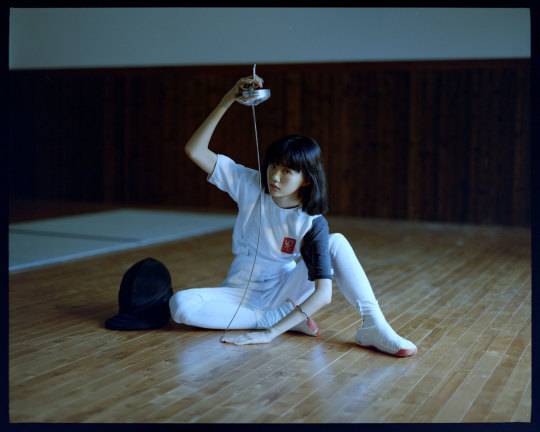
1/2 pill
3 notes
·
View notes
Text
Way to go The Great Courses… that’s not Taiwan, that’s Hainan.
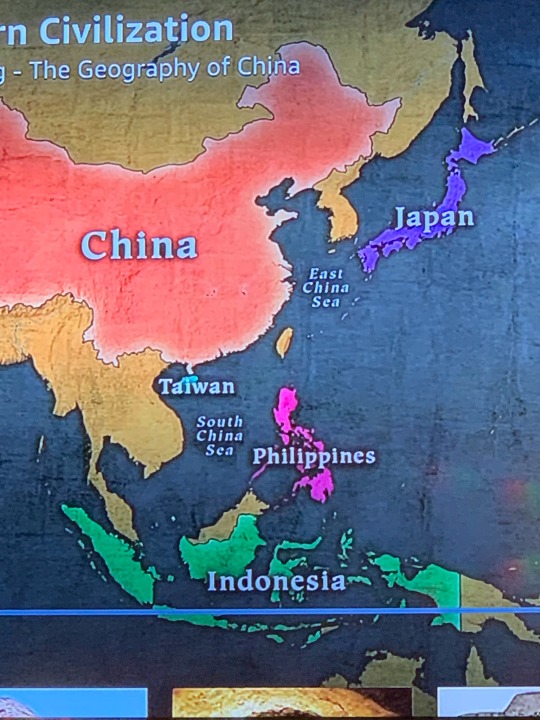
1 note
·
View note
Text
youtube
#Huaiyang cuisine is one of the four great cuisines of China. As one of the hometowns of #Huaiyangcuisine , #Huai'an City has a Huaiyang Cuisine Culture Museum to allow people to learn the #history and #culture and get a chance to taste it. Watch the video to find more! Please like, and subscribe to the channel.
0 notes
Photo

On December 1, 2019, Sarah performed at the opening ceremony of the 2nd “Hainan Island International Film Festival” in Sanya, Hainan province of China.
0 notes
Text
The Type 056 class “Qujing” (508) Corvette of the People’s Liberation Army Navy (PLAN) of China recently rescued a Vietnamese Fisherman who had a Life-threatening Accident in the South China Sea (SCS).
The Qujing responded to the Distress Call from the Vietnamese Vessel then which dispatched its Rigid Hull Inflatable Boat (RHIB) to transport the Fisherman to the Ship. The Fisherman was then evacuated to Hainan in China to undergo Surgery and is now doing fine. He will be returned back to his Vessel as soon as he gets better
Here is the Link to the original Article: http://eng.chinamil.com.cn/CHINA_209163/TopStories_209189/16258239.html
#type 056 class#qujing#508#peoples liberation army navy plan#south china sea scs#rigid hull inflatable boat rhib#hainan#vietnam
0 notes
Text
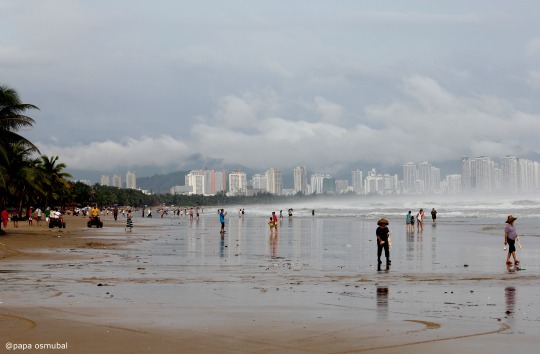
Hainan Island beach, China
0 notes
Text
我刚看完理智派生活。主角的最好朋友的婆婆去三亚,我现在觉得三亚很有意思。我想去海南……
1 note
·
View note
Text
«Walking Davos» attire des multinationales à Hainan
Près de 30 représentants de haut niveau et d'autres multinationales ont été invités à Hainan pour l'événement «Walking Davos»
Source Hainan International Media Center (HIMC) : Près de 30 représentants de haut niveau de Nestlé, Samsung, HSBC, Marriott International, Siemens Energy et d’autres multinationales bien connues ont été invités à prendre le pouls du développement du port de libre-échange de Hainan lors de visites dans des parcs industriels clés à Haikou, Sanya, Qionghai et Danzhou.
Chen Liming, président du…
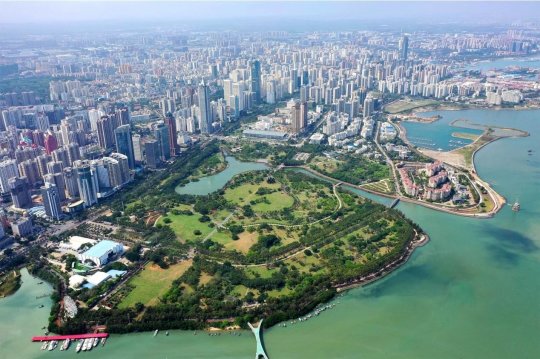
View On WordPress
0 notes